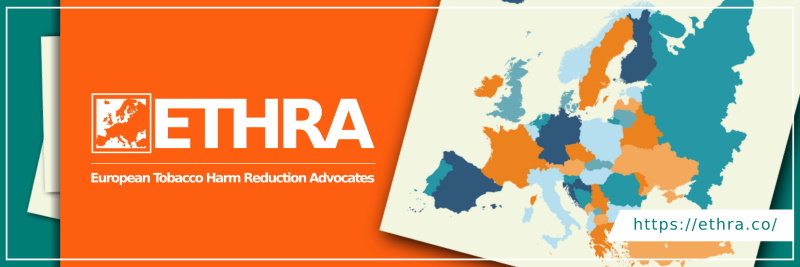Vapers Digest 23rd February

Friday’s News at a glance:
Vaping Has “Substantial Potential” – Australia Burns – A new low in anti-vape scaremongering – Further Evidence That CDC’s National Youth Tobacco Survey Exaggerates Teen Vaping Rates – WHO Prioritizes Youth Who Don’t Smoke Over Adults Who Do – WHO to Censor Media on Tobacco Harm Reduction – A knight in shining armour for European ex-smokers – Canadian Vaping Association – Nicotine pouches help smokers quit. Don’t ban them – Protest over bill banning vape flavors in Utah – Drug trends in young people – COP-OUT | WHO FCTC Punts On E-Cig Regulation – Unveiling Science Truths
Two from Dave Cross, Planet of the Vapes:
Vaping Has “Substantial Potential”
The UK Parliament Health and Social Care Committee has been told that vaping has ‘substantial potential’ to solve the problem of the harms caused by smoking by Professor Peter Hajek. The Professor at Queen Mary University London (QMUL) told the MPs that “Alternative products have substantial potential to solve the [smoking] problem for us”.
QMUL say: “In his evidence to the Committee’s enquiry into the prevention of harms and ill health caused by smoking, alcohol, drugs, and gambling, Professor Hajek observed that the prevalence of smoking in the UK is declining, particularly in younger people. He added that there is no evidence that vaping is a gateway into smoking, but some evidence that it is a gateway out of smoking.”
Australia Burns
Australia is providing a shocking vision of how things could be in the UK if Rishi Sunak’s administration continues down a prohibitionist road for vaping and vape products. The black market is reported to be soaring to unprecedented levels, misinformation and lies are being spread with hitherto unseen volume, and gang-related violence and firebombings are shaking the country to its core – all while having minimal impact on smoking rates.
According to the Global State of Tobacco Harm Reduction, “By law nicotine is restricted and classified as a ‘dangerous poison’ in Australia. If it is used for therapeutic purposes, i.e. quitting smoking, nicotine products have to be registered under the Therapeutic Goods Act (1989).
A new low in anti-vape scaremongering
Christopher Snowdon
This week’s “what fresh hell is this?” news comes from Tasmania where a veteran anti-smoking activist has proudly displayed her new anti-vaping banner. Like many “public health” academics in Australia, the self-described tobacco control advocate Kathryn Barnsley (“#MaskUp”, “Climate justice”, “Labor”) has switched her attention to e-cigarettes and has warned people to “look forward to unintended consequences” if they vape. According to Barnsley, these consequences include cancer, heart problems and lung disease. None of this is supported by the scientific literature but as evidence for the first claim, she has blown up a photo of a man’s mouth cancer which sadly killed him.
Incredible!
In spite of the overwhelming high-quality evidence that #vaping is an effective quitting aid, some Australian scientists would still prefer people to keep smokingMy comments via @australian
Full article pasted below ⤵️https://t.co/WJ2p2FYmQsInternational study…
— Dr Colin Mendelsohn (@ColinMendelsohn) February 21, 2024
❌Nos preocupan las declaraciones del Director de Salud Pública @pgullon. Qué significa “actuar sobre los vapers”?
Desde ANESVAP estamos encantados de explicarle nuestra experiencia del Vapeo como solución al tabquismo.
— ANESVAP (@anesvap) February 23, 2024
Further Evidence That CDC’s….
National Youth Tobacco Survey Exaggerates Teen Vaping Rates
Brad Rodu, Tobacco Truth
The National Survey on Drug Use and Health (NSDUH) is a valuable federal resource for population-level research on tobacco and other substance use. Analyzing its data, I have published research on how many Americans smoke (here, here, here and here), the illegitimacy of the gateway claim (here), and the role of smoking and smokeless tobacco (ST) use in past-year psychiatric disorders (here). I have shared in this blog other important NSDUH insights into how many Americans use ST (here), who smokes menthols (here and here), and teen smoking declines before and during the e-cigarette era (here and here). I have also noted that federal officials use NSDUH to spin their prohibition narratives (here).
WHO Prioritizes Youth Who Don’t Smoke
Over Adults Who Do – Lindsey Stroud
The World Health Organization recently held its 10th Conference of the Parties (COP10) to the Framework Convention on Tobacco Control (FCTC). Delegations from over 140 countries convened in Panama City, Panama, from February 5-10. COP10’s purposes included implementing and strengthening the first global health treaty intended to “reduce the growth and spread of the global tobacco epidemic.”
Yet by the time COP10 closed, it had demonstrated how the FCTC has traded this focus on reducing harms of combustible tobacco for an obsession with youth who do not even smoke. The needs of the 1.3 billion adults who do smoke, and who die in their millions each year, are the casualty.
WHO FCTC Punts On E-Cig Regulation
#GFNTVInterviews
Tobacco control promised bans and restrictions on e-cigarettes and other novel nicotine products for COP10, the Conference of the Parties to the WHO’s Framework Convention on Tobacco Control. But instead, frustrated by a handful of countries calling for a harm reduction approach to tobacco use, the global health regulator punted.
WHO to Censor Media on THR
Kgosi Letlape
World leaders are gathered in Panama this week for the global tobacco control conference to discuss the tenth World Health Organisation (WHO) Framework Convention on Tobacco Control (FCTC) Conference of the Parties (COP).
In a move reminiscent of a despotic government regime, the WHO FCTC is pushing for new guidelines to be implemented with a media and internet gag order on tobacco harm reduction.
“The proposal to keep smokers in the dark about better alternatives is ludicrous,” says harm reduction advocate, president and co-founder of the African Harm Reduction Alliance, Dr Kgosi Letlape. “To enact extreme bans on communications related to alternative tobacco nicotine products has far-reaching implications for the world’s 1.3 billion smokers.”
Swedish Minister for Public Health –
A knight in shining armour for European ex-smokers
In a debate on Wednesday in the Swedish Parliament, Minister for Public Health Jakob Forssmed emphasized how much greater health hazard cigarettes are compared to snus and how important it is to strengthen the diversification of taxation.
It was when a member of parliament from the Sweden Democrats asked the question of how the government intends to act to ensure that the white tobacco-free nicotine pouches are allowed to continue to be sold on the internal market that Minister Forssmed defended snus.
Canadian Vaping Association
Calls on the federal government to maintain science-based vaping regulations
The Canadian Vaping Association (CVA) is dedicated to promoting tobacco harm reduction (THR) strategies for adults while endorsing policies that safeguard youth from nicotine addiction and exposure. Global experts, including some who have testified in court, argue that certain measures proposed by health organizations, like flavour bans and high taxes, actually hinder harm reduction efforts and fail to reduce vaping experimentation among young people.
Contrary to many claims, a blanket ban on flavoured vaping products is a harmful approach to public health. Research finds that flavours play a crucial role in the adoption of vaping by adult smokers and that using a flavoured product to quit smoking significantly increases the likelihood of a successful quit attempt.
Nicotine pouches help smokers quit.
Don’t ban them – David Clement
A major problem with pouches, the Society explains, is that they are not regulated like tobacco products. In particular, they come in different flavours, which is not legal for tobacco. But why are flavours a problem? Pouches aren’t a tobacco product. They contain literally zero tobacco. Why should they be regulated as if they were tobacco?
Flavoured smoking cessation products have existed in Canada for some time. Nicorette, which comes in gums, lozenges, and sprays, offers a variety of flavours, including mint, fresh fruit, cool berry and mild spearmint.
Protest over bill banning vape flavors
In the Utah State Legislature
A crowd of people gathered in the Utah State Capitol rotunda and grew louder with every chant.
“We vape! We vote!” they shouted.
The group was demonstrating against Senate Bill 61, sponsored by Sen. Jennifer Plumb, D-Salt Lake City. It would restrict electronic cigarette products from being sold in Utah unless they are approved by the FDA. But what angered the crowd was another provision that restricted flavorings in vape juices to mint, menthol and tobacco only.
Unveiling Science Truths
Vaping Unplugged Podcast with Jeffrey Singer Ep. 44
In today’s episode we’re bridging the gap between medical science and vaping, exploring harm reduction, freedom of choice, and the nuanced distinctions between combustion, vaping and other safer alternatives.
We’re honored to have Jeffrey A. Singer, a senior fellow at the Cato Institute within the Department of Health Policy Studies, as our esteemed guest. With over 35 years of experience as a general surgeon and as the President Emeritus and founder of Valley Surgical Clinics Ltd., Dr. Singer brings a profound depth of medical expertise and insight into our conversation.
Guiding us through this enlightening dialogue is Liza Katsiashvili, the Operations Director at WVA.
Drug trends in young people:
What does it suggest about their changing lifestyles?
Drug trends have changed significantly among young people in the UK over the last few years. However, if you were to judge young people’s relationships with drugs through the lens of recent news and government press releases you would assume that they are caught up in turmoil as they’ve always apparently been. Disposable vape bans, nitrous oxide crackdowns, and endless police busts would seem to indicate that substance abuse is rampant among young people. But what does the data suggest?
Here is a short overview on how drug trends have changed among young people, and what this suggests about their values and choices in contemporary Britain.
Marcoleta distraught as Cayetano rant
Puts 3 million Filipino livelihoods at risk
“I’d rather have one thousand Dirty Ashtrays (award) than one coffin to contain the whole tobacco industry, including the farmers and stakeholders who are depending on the tobacco industry in our country,” Marcoleta said during his February 19 privilege speech.
Marcoleta referred to Senator Cayetano’s outburst at the Senate during a privilege speech where she encouraged the delegation to disregard the laws the country has passed to regulate tobacco use and novel tobacco alternatives like vapes, heated tobacco and oral nicotine.
On this Day…2023
A look back at how things have moved on or otherwise….
Rage-Driven Tobacco Control Industry…
Stupidity Explained In One Tweet – Dick Puddlecote
It was once explained to me that there are thousands of students who start off aspiring to be doctors. Those not clever enough to become doctors drift into other public health roles, but those who are not clever enough for that often go into the tobacco control industry.
This was in answer to my querying why I regularly read stuff from tobacco controllers which are too stupid for words. Either they lack basic comprehension of concepts such as behaviour and economics, or advance ideas so puerile that most 14 year olds should be able to see through them. Often I have imagined that some would not even have had the required intellect to be a driver in my transport company.
And today, we have seen a diamond-encrusted example of exactly this type of utter tobacco control stupidity….
Pro-death, anti-choice lobby…
Sides with the earthquake – Christopher Snowdon
I mentioned earlier how little use ‘public health professionals’ were during the pandemic.
Let’s not forget that these ‘public health’ academics spent the only genuine public health crisis of their lifetimes complaining about pubs being used as vaccination centres and whining about businesses donating food to the hungry and medical equipment to hospitals. Rarely has the chasm between public health and ‘public health’ been illustrated so starkly.
I had barely pressed ‘publish’ when I saw this story about anti-smoking activists trying to get the Turkish government to turn down a €1.8 million donation from Phillip Morris International for humanitarian aid after the recent earthquake.









